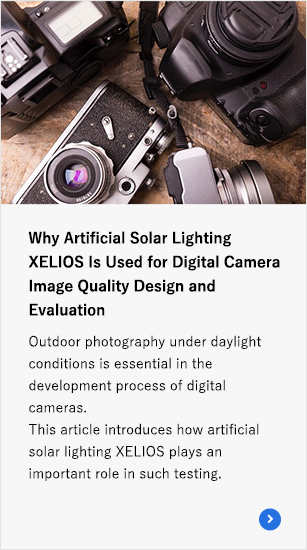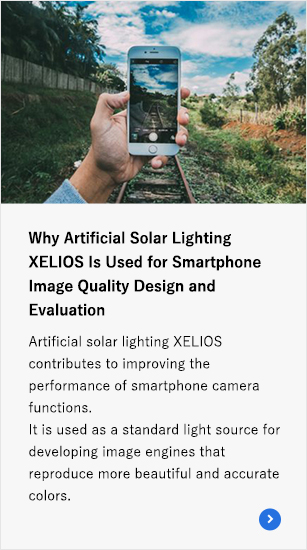Smartphones and digital cameras are equipped with thermal sensors that detect internal temperature increases. When used for extended periods, the devices can become hot, and their temperature may rise rapidly, especially under direct sunlight outdoors.
For example, when shooting outdoors during the daytime in summer, the camera function may stop working in just a few minutes. This is because the device detects abnormal heat and automatically shuts down to protect its internal electronic components. Therefore, smartphone and camera manufacturers need to conduct heat resistance tests (solar radiation tests) using environments that can reproduce such conditions.
When using a smartphone or camera outdoors, you may see messages like the following.
[Notice] The camera is shutting down because the device temperature has risen. The recorded video will be saved. Once the temperature has dropped, please restart the device.

This is because the real-time processing load of video increases power consumption when the camera function is used, causing the device temperature to increase even more.
In the experiment, the surface temperature of the smartphone was 41.9°C when this warning appeared. If the temperature increases even more, the internal electronic components will be put under stress, which increases the risk of malfunction or failure. To prevent this, manufacturers conduct ‘heat resistance tests’ and ‘sunlight tests.’
XELIOS is an artificial solar lighting device capable of emitting light with brightness (100,000 Lx) or irradiation intensity (1 kW/m²) equivalent to direct sunlight. These characteristics make it possible to reproduce conditions close to that of an outdoor environment and solve the following issues.
•Accurately simulates functional shutdown due to heat
•Reproduces the same temperature changes as in actual usage environments
•Makes measuring the impact of automatic screen brightness adjustment on power consumption possible
When direct sunlight hits the smartphone screen, the brightness automatically increases to ensure visibility. As a result, this leads to increased power consumption and higher device temperatures. With XELIOS, it is possible to accurately test these sorts of temperature changes that are caused by sunlight.
In common environmental tests, a thermostatic chamber is used to raise the ambient temperature. However, a problem with this method is that it is difficult to reproduce the temperature difference found in real environments where only one side is exposed to sunlight.
Using XELIOS, manufacturers can:
•accurately reproduce the temperature difference between the sunlit and shaded sides
•conduct heat resistance tests (sunlight tests) under conditions that closely simulate real environments
Therefore, manufacturers are utilizing XELIOS to conduct more accurate tests.
The XELIOS Super Spotlight Type (XG-500EFSS) can faithfully reproduce the actual environment in which smartphones are used, as it simultaneously allows for adjustment of screen brightness and solar radiation testing. It is especially useful for testing operability and display quality in high-temperature outdoor environments.

The Super Spotlight Type XG-500EFSS, which can reproduce brightness equivalent to direct sunlight (100,000 Lx) or irradiation intensity (1 kW/m²), is an essential testing device for smartphone development.
Currently, many smartphone and display manufacturers are using XELIOS to conduct heat resistance tests (solar radiation tests).
If you are considering conducting heat resistance tests (solar radiation tests) under the same conditions as those in natural sunlight, please feel free to contact us.



